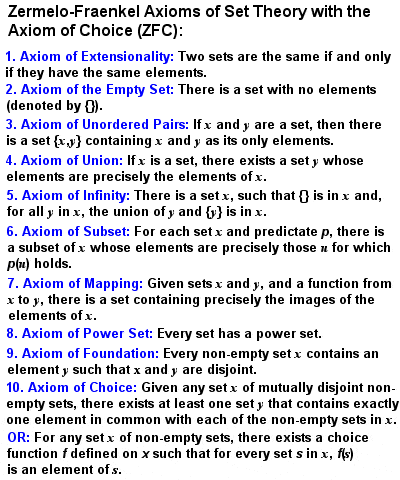PAUL COHEN: SET THEORY & THE CONTINUUM HYPOTHESIS
 |
Paul Cohen (1934-2007) |
Paul Cohen was one of a new generation of American mathematicians inspired by the influx of European exiles over the War years. He himself was a second generation Jewish immigrant, but he was dauntingly intelligent and extremely ambitious. By sheer intelligence and force of will, he went on to garner for himself fame, riches and the top mathematical prizes.
He was educated at New York, Brooklyn and the University of Chicago, before working his way up to a professorship at Stanford University. He went on to win the prestigious Fields Medal in mathematics, as well as the National Medal of Science and the Bôcher Memorial Prize in mathematical analysis. His mathematical interests were very broad, ranging from mathematical analysis and differential equations to mathematical logic and number theory.
In the early 1960s, he earnestly applied himself to the first of Hilbert’s 23 lists of open problems, Cantor’s continuum hypothesis, whether or not there exists a set of numbers bigger than the set of all natural (or whole) numbers but smaller than the set of real (or decimal) numbers. Cantor was convinced that the answer was “no” but was not able to prove it satisfactorily, and neither was anyone else who had applied themselves to the problem since.
 |
One of several alternative formulations of the Zermelo-Fraenkel Axioms and Axiom of Choice |
Some progress had been made since Cantor. Between about 1908 and 1922, Ernst Zermelo and Abraham Fraenkel developed the standard form of axiomatic set theory, which was to become the most common foundation of mathematics, known as the Zermelo-Fraenkel set theory (ZF, or, as modified by the Axiom of Choice, as ZFC).
Kurt Gödel demonstrated in 1940 that the continuum hypothesis is consistent with ZF, and that the continuum hypothesis cannot be disproved from the standard Zermelo-Fraenkel set theory, even if the axiom of choice is adopted. Cohen’s task, then, was to show that the continuum hypothesis was independent of ZFC (or not), and specifically to prove the independence of the axiom of choice.
Forcing Technique
Cohen’s extraordinary and daring conclusion, arrived at using a new technique he developed himself called “forcing“, was that both answers could be true, i.e. that the continuum hypothesis and the axiom of choice were completely independent from ZF set theory. Thus, there could be two different, internally consistent, mathematics: one where the continuum hypothesis was true (and there was no such set of numbers), and one where the hypothesis was false (and a set of numbers did exist). The proof seemed to be correct, but Cohen’s methods, particularly his new technique of “forcing”, were so new that no-one was really quite sure until Gödel finally gave his stamp of approval in 1963.
His findings were as revolutionary as Gödel’s own. Since that time, mathematicians have built up two different mathematical worlds, one in which the continuum hypothesis applies and one in which it does not, and modern mathematical proofs must insert a statement declaring whether or not the result depends on the continuum hypothesis.
Cohen’s paradigm-changing proof brought him fame, riches and mathematical prizes galore, and he became a top professor at Stanford and Princeton. Flushed with success, he decided to tackle the Holy Grail of modern mathematics, Hilbert’s eighth problem, the Riemann hypothesis. However, he ended up spending the last 40 years of his life, until his death in 2007, on the problem, still with no resolution (although his approach has given new hope to others, including his brilliant student, Peter Sarnak).
<< Back to Weil | Forward to Robinson and Matiyasevich >> |
